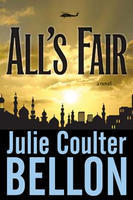Yes, it’s cool and it’s glossy and it’s filled with attractive people. And guns and explosions and spy work and secret undercover coolness. And hilarity.
But that’s not why I love Burn Notice. (Those things don’t hurt, mind you.)
 I love Burn Notice because of the characters. Namely one Michael Westen. (And no, I don’t mean Jeffrey Donovan, though he is quite attractive. I mean Michael Westen.) When USA says “Characters welcome,” they mean it.
I love Burn Notice because of the characters. Namely one Michael Westen. (And no, I don’t mean Jeffrey Donovan, though he is quite attractive. I mean Michael Westen.) When USA says “Characters welcome,” they mean it.
Michael is a complex character—he’s terrible at interpersonal relationships. He does bad things. And though he wouldn’t talk about it and takes no pleasure in it, he has killed. He’s not above blackmail or letting the bad guys kill each other.
Though he’d prefer not to have to deal with them, Michael loves his mom and his brother and does all he can to protect them. In a recent episode (“End Run“), Michael was blackmailed into working for a bad guy because said bad guy threatened his brother. The writers even made it so that working for the bad guy wasn’t all that bad—he didn’t want a nuke, just a particular electronic interface. “People will go on killing each other in little wars all around the globe, whether or not you steal it,” he says. “The only difference is how much money I make while they do it.” To show he’ll make good on his threat, the bad guy even shoots Michael’s brother in the arm.
It wouldn’t be so wrong, then, would it? It would save his brother’s life (before he bleeds out, too), and it wouldn’t cost the world much.
 Michael breaks into the office, gets the weapon and—sees a photo of a family. With kids. While that reminder helps him put together some of the scant evidence they’ve compiled about this bad guy, I think it also reminds him of the greater good. “I’m not handing over a nuke to save one life,” he tells the bad guy, “even if it is my brother’s.”
Michael breaks into the office, gets the weapon and—sees a photo of a family. With kids. While that reminder helps him put together some of the scant evidence they’ve compiled about this bad guy, I think it also reminds him of the greater good. “I’m not handing over a nuke to save one life,” he tells the bad guy, “even if it is my brother’s.”
Michael is a great character because he’s strong—physically, yes, but more importantly, he’s extremely smart/savvy (mental strength, if you will). He even verges on too strong—as a blacklisted spy/former black ops soldier, he knows just what to do in any given situation. But he has weaknesses—the classics: children; his family; oh, and the fate of the entire world. Most importantly, he struggles.
And this time, he struggled because the choice was hard—it wasn’t save or destroy the world (or save the world, sacrifice integrity), it was save his brother or some small number of unknown people—possibly no one. The talented writers made it seem no great sin if Michael had decided to trade the weapon for his brother’s life. And he almost did.
But in the end, he didn’t. And that’s what I love most about Burn Notice.
Who are your favorite television characters? Why?
You can watch the full episode on Hulu until July 30.
 I have a couple of ideas on where to go next—but I’d love to get your feedback, so we can discuss what you’re most interested in. So, the topics I’m thinking of covering next are:
I have a couple of ideas on where to go next—but I’d love to get your feedback, so we can discuss what you’re most interested in. So, the topics I’m thinking of covering next are:

 Once upon a time, there was a young man who was a habitual thief. Even though his family was perfectly capable of providing for him, and even though he was perfectly capable of working to support himself, he stole everything he owned and stole from anyone he could. He even subjugated innocent animals to make them steal for him.
Once upon a time, there was a young man who was a habitual thief. Even though his family was perfectly capable of providing for him, and even though he was perfectly capable of working to support himself, he stole everything he owned and stole from anyone he could. He even subjugated innocent animals to make them steal for him. Okay, if you haven’t guessed it by now, I’ll just tell you: our hero is Aladdin from the Disney animated film. And yeah, it’s a kids’ film, so the characterization can be a little . . . well, strong. (How do you convince a five-year-old that the guy stealing on screen is actually the good guy?) But at the same time, it’s done fairly (or at least relatively) believably.
Okay, if you haven’t guessed it by now, I’ll just tell you: our hero is Aladdin from the Disney animated film. And yeah, it’s a kids’ film, so the characterization can be a little . . . well, strong. (How do you convince a five-year-old that the guy stealing on screen is actually the good guy?) But at the same time, it’s done fairly (or at least relatively) believably. The next step is getting the reader to support the character’s goals and aspirations. While a character doesn’t have to be admirable, Frey stresses, the easiest way to get readers to support a character’s goal is to make sure their goal is noble.
The next step is getting the reader to support the character’s goals and aspirations. While a character doesn’t have to be admirable, Frey stresses, the easiest way to get readers to support a character’s goal is to make sure their goal is noble.  This doesn’t mean that every sad sack character should be trudging through the pouring rain (to the courthouse to try to win his freedom from a wrongful conviction)—though it might help. It does mean, however, that it helps for the character to take notice of his environs, and for them to mirror (or, possibly, contrast or mock) his internal emotional state.
This doesn’t mean that every sad sack character should be trudging through the pouring rain (to the courthouse to try to win his freedom from a wrongful conviction)—though it might help. It does mean, however, that it helps for the character to take notice of his environs, and for them to mirror (or, possibly, contrast or mock) his internal emotional state.
 Okay, you guessed it—just like a character who just gets more and more bad stuff piled on, a character who’s easily and confidently stronger than every challenge he faces isn’t really sympathetic.
Okay, you guessed it—just like a character who just gets more and more bad stuff piled on, a character who’s easily and confidently stronger than every challenge he faces isn’t really sympathetic.